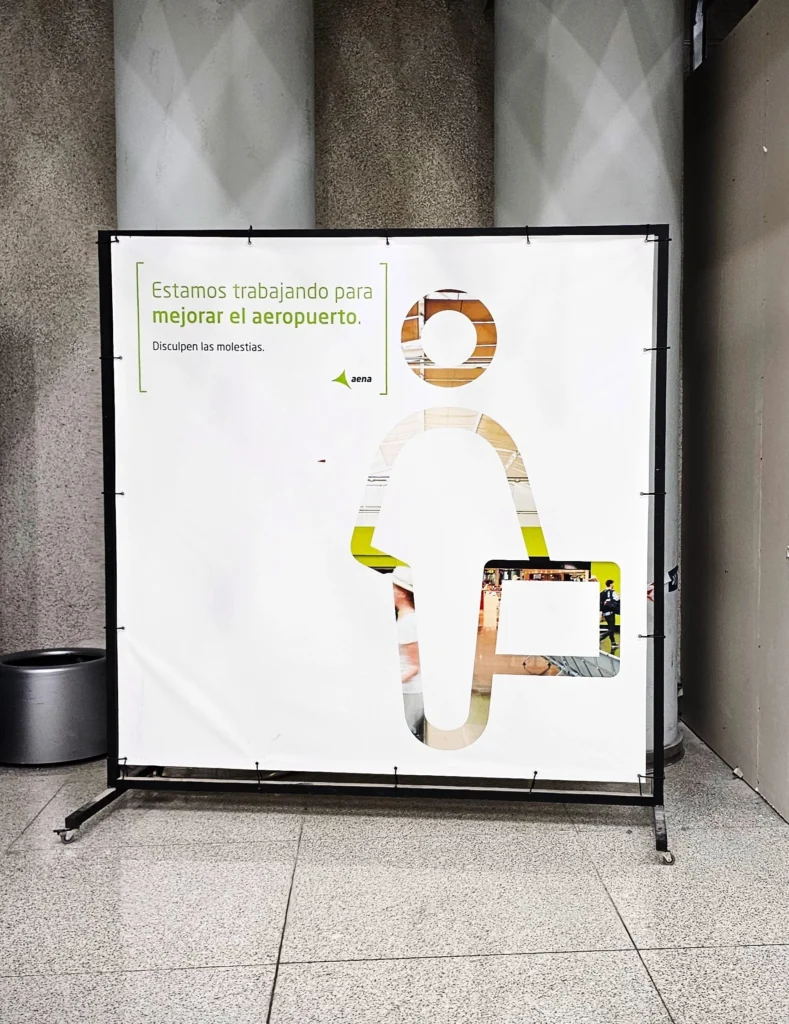Palma Airport Enters the Final Stretch of its Major Modernisation Project
Wednesday, November 19th, 2025
Palma de Mallorca Airport is approaching the last phase of an extensive redevelopment plan, the most ambitious upgrade it has seen in two decades. Recent updates from Aena outline how the €560 million investment is reshaping the airport’s infrastructure, layout and passenger facilities. With more than two-thirds of the construction already finished, 2026 is set to be the final year of works.
A Complex Upgrade in a Fully Operational Airport

The sheer scale of the redevelopment is remarkable. Currently, 65 individual projects are being executed simultaneously, with 40 directed by Aena and 25 led by private companies, mobilising more than 25 contractors while the airport continues its day-to-day operations.
Construction began in late 2022, and despite occasional unforeseen disruptions, flight operations have remained unaffected. The Balearic Institute for Occupational Health and Safety carries out frequent inspections to ensure safe working conditions during this demanding overhaul.
Upcoming Works: What Changes Are on the Way?
Transforming the Terminal: New Central Vertical Connection
One of the standout structural changes is the creation of a new central circulation hub linking the terminal’s three main floors (level 0, level 2 and level 4). This vertical core, featuring escalators, lifts and stairs, will provide a much more direct connection between levels. The older escalators spanning from the second to the fourth floor will be removed to make way for this streamlined layout.
Check-In Floor Changes: A More Efficient and Passenger-Friendly Space
Much of the current activity focuses on the check-in floor (Level 2). Temporary panels conceal several construction zones while key enhancements take shape:
Repositioned Dining Spaces
Food and beverage outlets are being shifted toward the front of the terminal, adjacent to the outdoor area. This will allow cafés and restaurants to offer open-air terrace seating, something that has been missing from the check-in area until now.
Renovated Airline Offices
Offices for airlines and handling companies are being relocated and revamped to improve the flow of both passengers and staff. The redesign is intended to optimise operational efficiency behind the scenes.
Expanded Baggage Facilities
The terminal enlargement will introduce a seventh baggage check-in zone, helping to accommodate Palma’s high passenger volumes, especially during the summer travel rush.
Fully Functional Security Area
The new security checkpoint on Level 2 began operating in late 2024, and further screening lanes are gradually being introduced over the next few months. Once fully completed, the airport’s security capacity will expand significantly, from 18 to 48 lanes, greatly increasing throughput during peak travel periods. At one end of the departures floor, a dedicated screening area will serve passengers with reduced mobility, while the opposite end will accommodate checks for special baggage. In addition, all nearby washrooms are currently being refurbished as part of the wider upgrade.
Departures Level Upgrades: Improved Outdoor Areas for Travellers
On the departures level (Level 4), the former “solarium” terrace is being transformed into a pleasant outdoor space within the security zone. This revamped area is planned to include cafés as well as places to sit, relax or work before boarding, giving travellers more variety and comfort once they have passed through security.
Upgrades to Departure Modules
Module D will be temporarily closed during the winter months so that its roof can be replaced. This project also includes installing energy-efficient lighting, updating air-conditioning ducts and fitting new ceiling finishes.
Additional work is progressing on fitting airbridges to gates in Modules A and D. These improvements will be phased so that flight operations remain uninterrupted.
Major Improvements Outside Arrivals: New Elevated Walkway
Outside the arrivals area of the terminal, one of the most transformative additions will be an elevated walkway with travellators. This sloping walkway will connect:
- The arrivals level to the first floor of the car park
- The car park’s first floor to the departures level
The goal is to ease congestion in one of the airport’s busiest zones. During the high season, up to 6,000 passengers pass through the arrivals forecourt every hour, often leading to queues at the pedestrian crossing towards the car park.
Once the walkway opens, projected for March 2026, travellers heading to rental cars or private vehicles will no longer need to cross busy traffic lanes. Local residents using the car park to catch flights will also enjoy a smoother route to the departures hall.
This project accompanies a broader reorganisation of the arrivals forecourt, which has already included:
- Relocating the taxi rank to prevent crowding
- Expanding the area for private-hire coaches
- Creating new TIB and EMT bus stations with separated access routes
- Redesigning parking for VTC vehicles and registered minibuses
When Will Passengers See The Changes?

Most of the visible improvements, including the upgraded interiors, new terraces, reworked check-in zones and additional parts of the new security area, are expected to open before the next summer season. The former fourth-floor terrace, now integrated into the expanded airside commercial area, will also reopen during this period.
Aena therefore expects that by summer 2026, passengers will benefit from a vastly improved airport environment with only minor, less visible works continuing into the autumn and winter.
By the end of 2026, all major construction will be completed, ushering in a new era for one of Spain’s busiest airports.
NEWSLETTER
Stay informed – travel smarter. Sign up to our newsletter!
